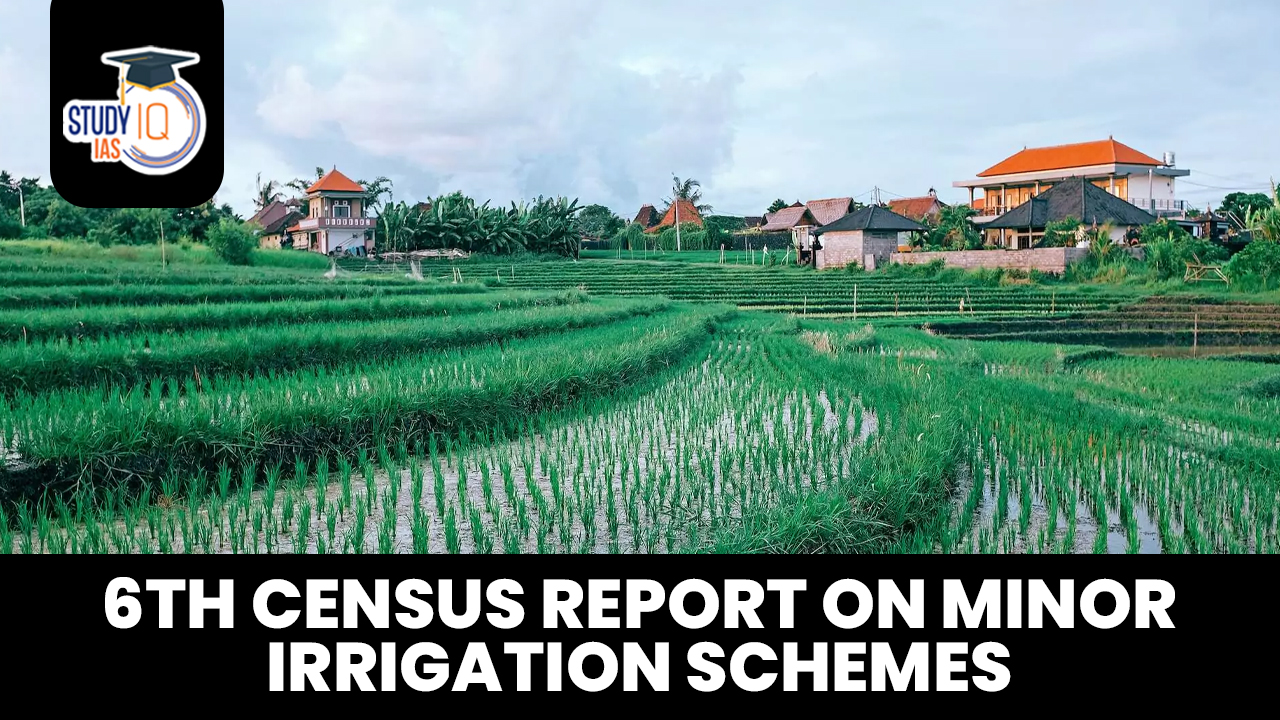Table of Contents
Context: The Ministry of Jal Shakti released the report on the 6th census on minor irrigation schemes.
What is Minor Irrigation (MI) Schemes?
- Minor irrigation (MI) schemes are defined as those structures either in ground water or in surface water category having Culturable Command Area (CCA) up to 2,000 ha.
- CCA refers to the total area of land that can be effectively irrigated and cultivated using water from a specific irrigation project or scheme.
- The Ground water schemes comprise dug well, dug-cum-bore wells, shallow, medium and deep tubewells.
- The surface water scheme comprises surface flow schemes and surface lift irrigation schemes.
- The surface flow schemes typically consist of tanks, check-dams, structures and can serve as water conservation cum ground water recharge scheme.
- Surface lift schemes are generally built in regions where topography does not permit direct flow irrigation from rivers and streams and hence water has to be lifted into irrigation channels.
Key Highlights of the Report
- As per the report, 23.14 million minor irrigation (MI) schemes have been reported in the country, out of which 21.93 million (94.8%) are Ground Water (GW) and 1.21 million (5.2%) are Surface Water (SW) schemes.
- There has been increase of about 1.42 million in MI schemes during 6th MI census as compared to 5th Census. At the national level, both GW and SW schemes have increased by 6.9% and 1.2%, respectively.
- Percentage Distribution of MI schemes by type: During 6th MI census, dugwell schemes have major share followed by shallow tubewells (depicted in the pie- chart).
- Ownership type: 96.6% minor irrigation schemes continue to remain under private ownership whereas 3.4% are under public ownership.
- This pattern is more dominant in Ground water schemes where almost all type of schemes (98.3%) has private ownership.
- In Surface Water Schemes, 35.8% schemes are in public ownership and 64.2% are in private ownership
- Out of all the individually owned schemes, 18.1% are owned by women.

- Financing of MI schemes: Around 60.2% schemes have single source of finance whereas 39.8% schemes have more than one source of finance.
- In single source of finance, majority of schemes (79.5%) are being financed by own savings of individual farmer.
- Other important sources of finance are bank loan (6.9%), government fund (4%) and money lender (1.3%).
- Distribution of source of energy: Majority of schemes (76%) utilize electricity as source of energy followed by diesel (22.2%).
- Rest of the schemes (1.8%) use windmill, solar pumps, manual/animal and other sources of energy.
- This clearly reveals that 98.2% schemes are operated by either electricity or diesel.
- Leading states in MI Schemes: Uttar Pradesh possesses the largest number of MI schemes in the country (17.2%) followed by Maharashtra (15.4%), Madhya Pradesh (9.9%) and Tamil Nadu (9.1%).

- Leading States in number of MI schemes by type:



 UNESCO Global Network of Learning Cities...
UNESCO Global Network of Learning Cities...
 National Livestock Mission (NLM): Object...
National Livestock Mission (NLM): Object...

























